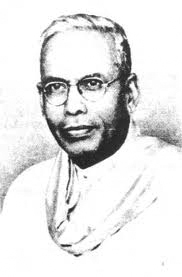The man who made librarianship a science

S.R. Ranganathan
|
Ranganathan was born in Sirkazhi (Siyali) in 1892. He got his BA and MA degrees in Mathematics studying in Madras Christian College. His ambition was to become a teacher of Mathematics and for five years he taught Mathematics in Mangalore, Coimbatore and Madras. When the University of Madras sought applications for the newly created position of Librarian for the University’s poorly organised library, Ranganathan applied and was offered the position.
Although he did not have any formal training in librarianship, he was one of the 900 applicants who had a few research papers in Mathematics, which convinced the search committee that Ranganathan had the right aptitude. He faced the interview committee with information he had read in Encyclopaedia Brittanica. Ranganathan accepted the offer in 1924, but soon found that the position was not to his liking. When he sought his teaching job back, the University administration enticed him by offering to send him to London for a degree in librarianship.
At the University College, London, his mathematically oriented mind latched on to the problem of classification of books. He concentrated on what he perceived as flawed, the then popular decimal classification system, and explored new options. He devised the Acknowledgement of Duplication, which states that any system of classification of information necessarily implies at least two different classifications for any given datum. He proved this concept applying Dewey Decimal Classification. He then developed Colon Classification while in England, and refined it on his way back home, testing his new design on the ship’s library. It is said that he got the idea for the system seeing a Meccano set in London.
He developed a codification of cataloguing practice in his book Classified Catalogue Code (1934). The two, Colon Classification and Classified Catalogue Code, along with the Five Laws of Library Science, triggered the academic series published by the Madras Library Association. His next volume, Library Administration (1935), illustrates best his remarkable ability to analyse practice in the minutest detail to produce an instructional manual, which is a benchmark work for even the least educated assistant. Thus, the first, and possibly the most fundamental, contribution he made to Indian librarianship was to publish basic texts for the education of future professionals. Ranganathan returned with profound interest in the science of librarianship and a vision for India.
After his return he held the position of Librarian at the University of Madras for 20 years. He was one of the founders of the Madras Library Association, and worked hard to establish free public libraries throughout India and for the creation of a comprehensive national library. Ranganathan left behind two legacies: Five laws of library science (1931) and Colon classification (1933).
Ranganathan resigned his job at the age of 54 and accepted positions as Professor of Library Science in Benares and Delhi. His final achievement was the establishment of the Documentation Research and Training Centre in the Indian Statistical Institute in Bangalore in 1962, where he served as honorary director for five years. He died in Bangalore in 1972.
|

